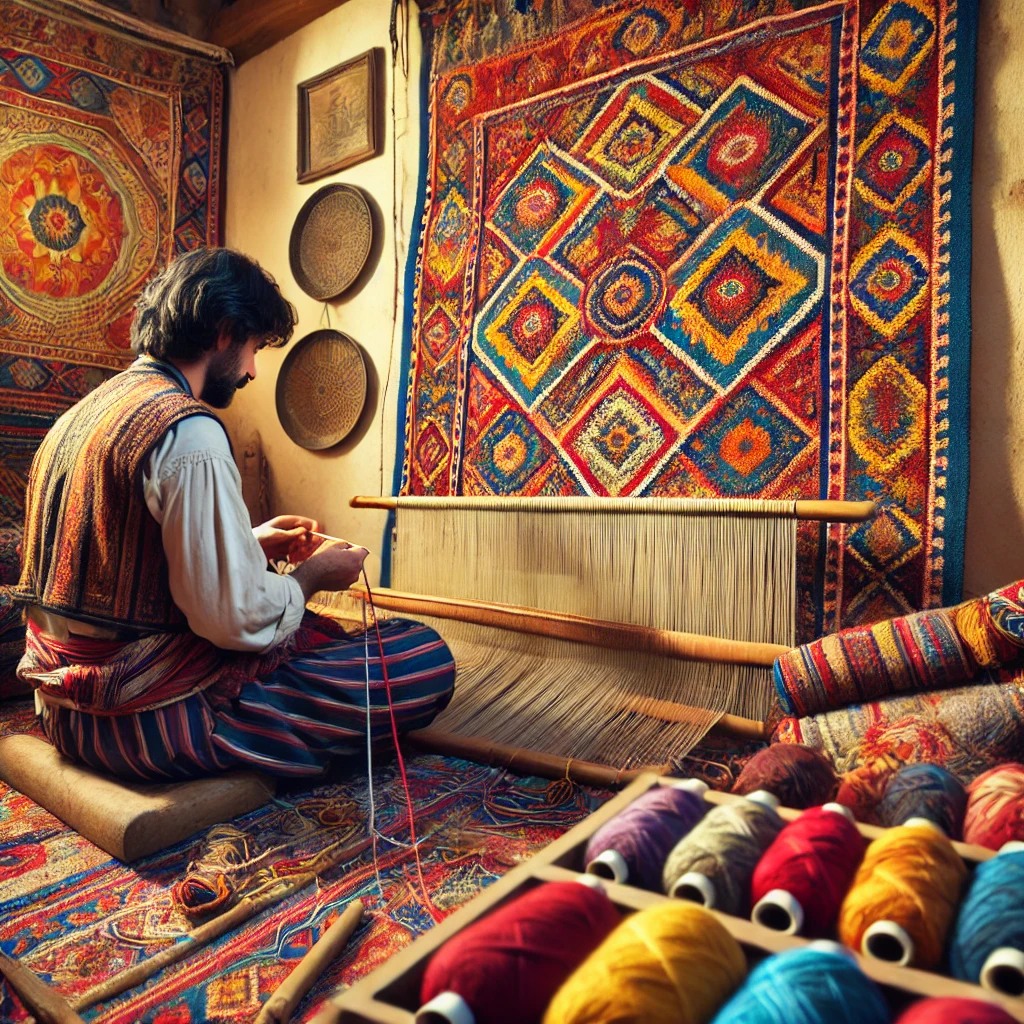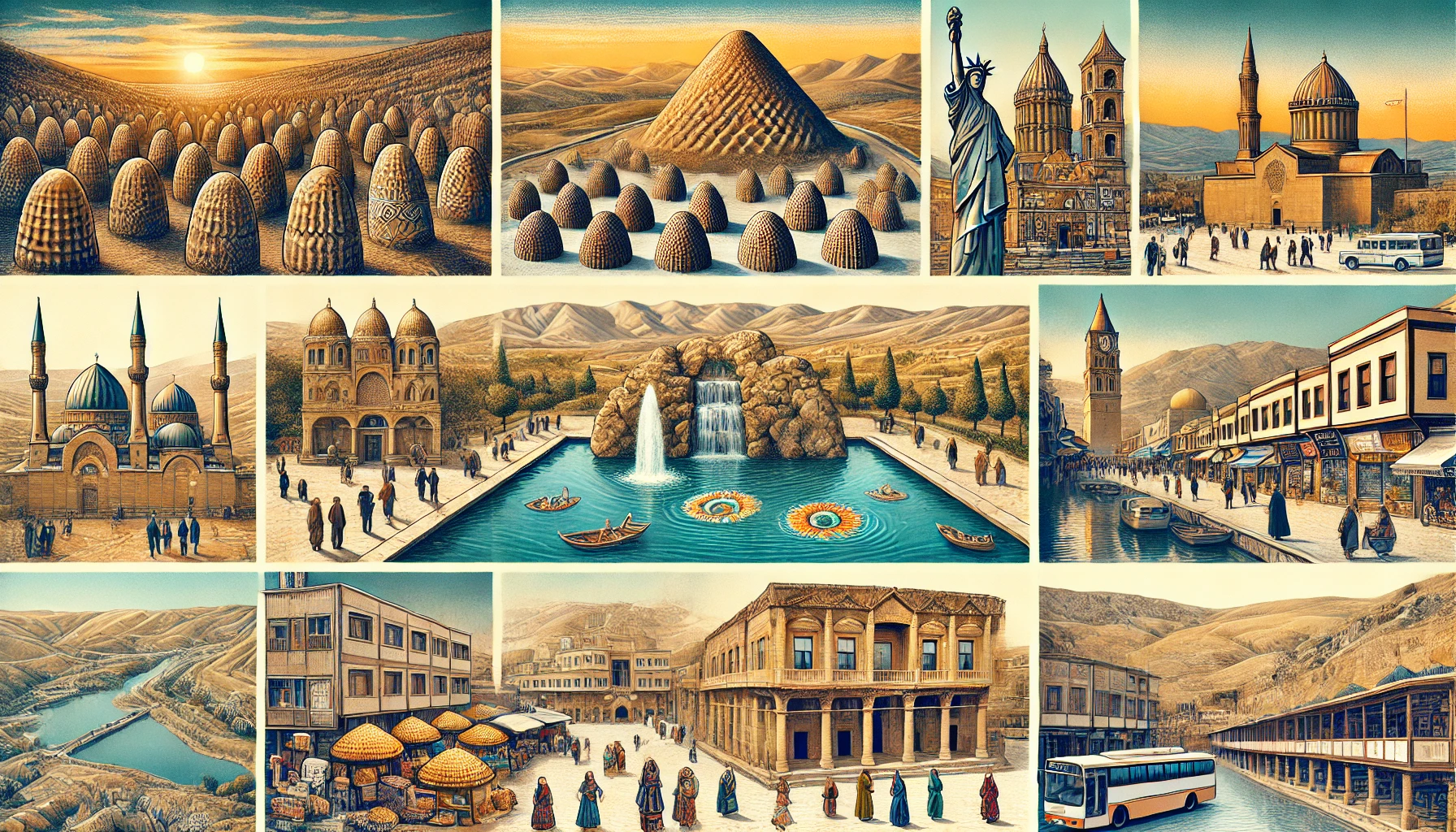The Timeless Art of Turkish Carpet Weaving
Turkish carpet weaving is an ancient art form that has captivated people for centuries with its intricate designs, vibrant colors, and exceptional craftsmanship. From the Gordes knot technique used in the Hun period to the naturalistic motifs of Ottoman court carpets, Turkish carpets are not just floor coverings but also pieces of history and art. This article explores the evolution of Turkish carpet weaving, highlighting significant periods and styles that define this unique craft.
Early Beginnings: The Gordes Knot
The Ancient Technique
The origins of Turkish carpet weaving can be traced back to ancient times. Excavations in tombs at Pazarik revealed carpets using the complex Gordes knot technique dating back to the Hun period. This sophisticated method, named after the Turkish carpet weaving center of Gordes, involves a double knot that provides durability and a plush texture.
Unexplained Gaps and Rediscovery
However, there is an unexplained gap in the history of Turkish carpet weaving until the discovery of simpler single weft knot carpets from the 3rd and 6th centuries in Lou-Lan, Eastern Turkistan. This suggests that the complex Gordes technique may have been forgotten and then rediscovered later.
Islamic Influence and Abbasid Carpets
Geometric Designs and New Techniques
With the advent of Islamic times, the art of carpet weaving saw significant changes. Abbasid carpet fragments with geometric designs were found in Fostat (old Cairo). These fragments, now in Cairo’s Museum of Islamic Art, showcase the Gordes knot and are believed to have been exported from Western Turkistan between the 7th and 9th centuries.
Seljuk Carpets and the Introduction of Animal Figures
The Seljuk Influence
Anatolian Turkish carpets dating from the 13th century, found in Konya, are among the earliest examples of the Gordes knot technique. The Seljuk period introduced animal figures into carpet designs, paralleling their use in other Seljuk arts. These carpets were highly valued in Europe and depicted in European paintings, indicating their widespread popularity.
The Holbein Carpets
European Influence and Artistic Evolution
The 15th century marked another phase in Turkish carpet development with the Holbein carpets. Named after the artist Hans Holbein, who frequently depicted them in his paintings, these carpets feature geometric designs and borders inspired by the kufic Arabic script. The Holbein carpets represent the beginning of the Ottoman Turkish style of carpet design.
The Usak Carpets: Medallions and Stars
Diversity in Design
The 16th century saw the rise of a new era in Turkish carpet weaving with the Usak carpets. These carpets, originating from the Usak region, are known for their extraordinary diversity in motif and composition. Usak carpets can be divided into two main types: those with medallions and those with star designs. Medallion carpets often feature a central medallion surrounded by halved medallions in the corners, while star Usak carpets display smaller medallions arranged in offset rows.
Ottoman Court Carpets: Naturalistic Motifs and Persian Influence
A New Style Emerges
In the late 16th century, a new type of Turkish carpet emerged: the Ottoman court carpet. Employing the Persian knot, also known as the asymmetrical knot, these carpets have a finer, velvet-like texture. The designs feature naturalistic motifs such as tulips, hyacinths, roses, and curved leaves, reflecting the simultaneous evolution of other Turkish arts during this period.
Prayer Rugs: A Symbol of Devotion
Unique Designs and Historical Significance
Prayer rugs constitute a distinct category of Turkish carpets, with some of the oldest known examples dating back to the 15th century. These rugs feature a niche or mihrab design, symbolizing the direction of Mecca. Notable prayer rugs include those from Gordes, Kula, Ladik, and Usak, each with unique characteristics and color schemes.
The Legacy of Turkish Carpet Weaving
Continuation and Preservation
Turkish carpet weaving continued to evolve through the centuries, with significant contributions from regions such as Konya, Kayseri, Sivas, and others. Efforts to preserve this art form have been successful, ensuring that Turkish carpets remain a treasured part of the country’s cultural heritage.
Conclusion
The art of Turkish carpet weaving is a testament to the country’s rich cultural history and artistic innovation. From the ancient Gordes knot technique to the intricate designs of Ottoman court carpets, Turkish carpets continue to captivate collectors and enthusiasts worldwide. Whether you are a seasoned collector or a casual admirer, understanding the history and craftsmanship of Turkish carpets adds a deeper appreciation for these beautiful works of art.
Latest Update: Jul 31, 2024
Your Content Goes Here
TAGS: authentic Turkish carpets, carpet weaving history, colorful yarns, geometric designs, Gordes knot technique, handwoven carpets, Ottoman carpets, traditional Turkish carpets, traditional weaving methods, Turkish artisan, Turkish carpet art, Turkish carpet weaving, Turkish craftsmanship, Turkish cultural heritage, Turkish textile art
A brief summary of the key points in this article.
















